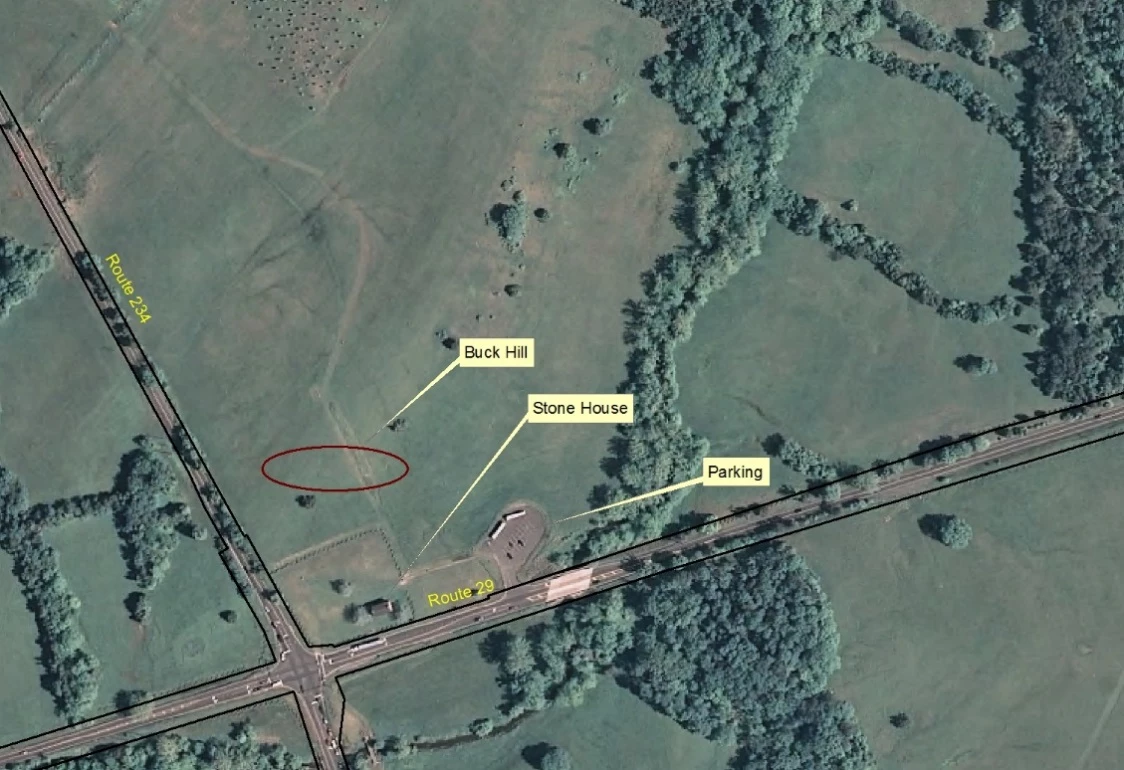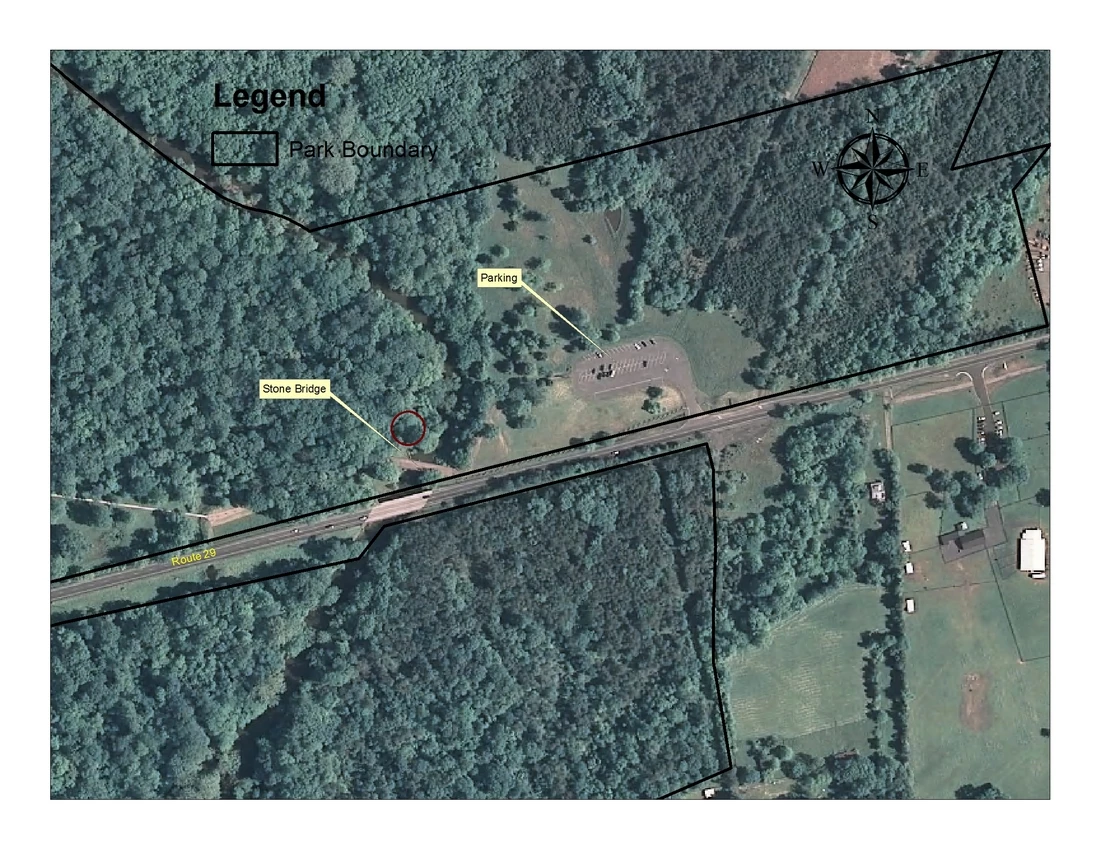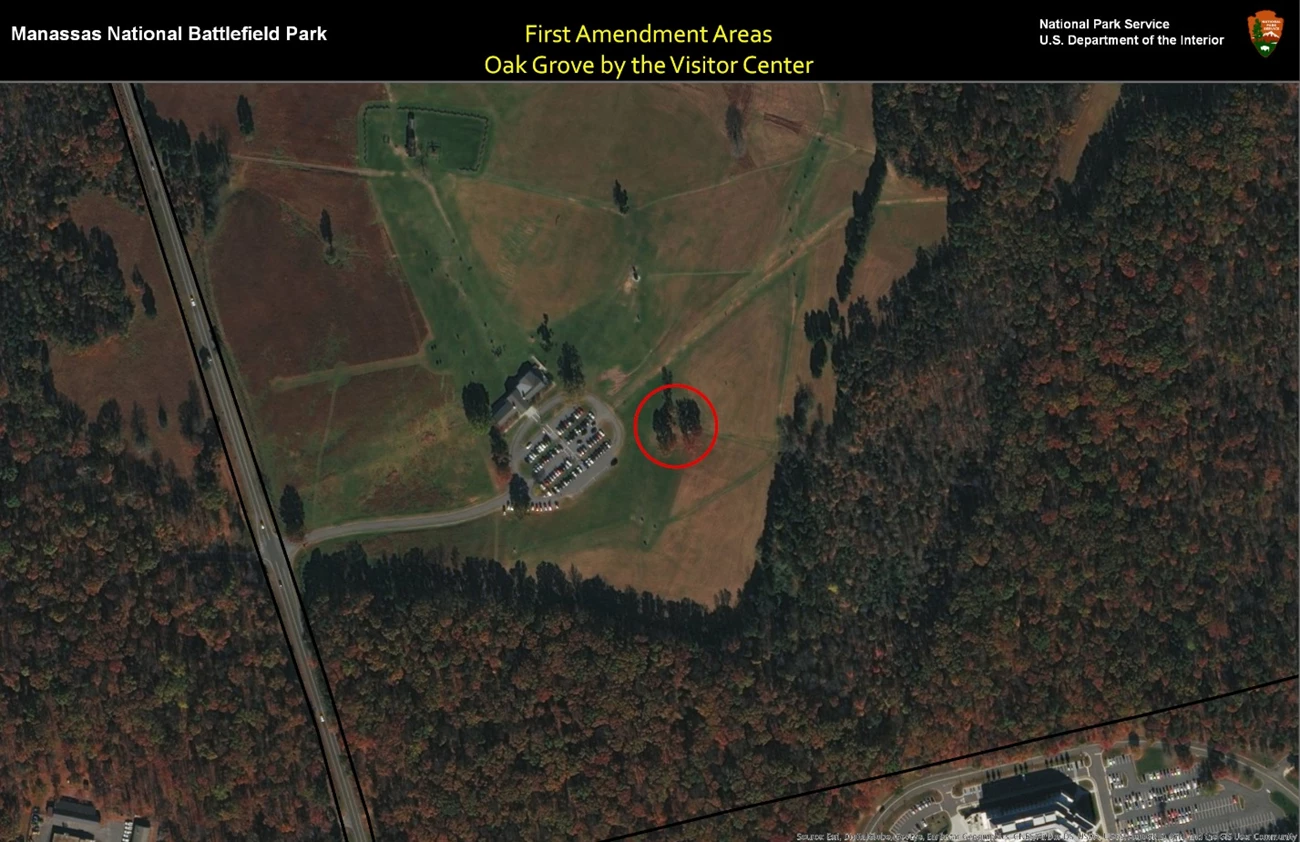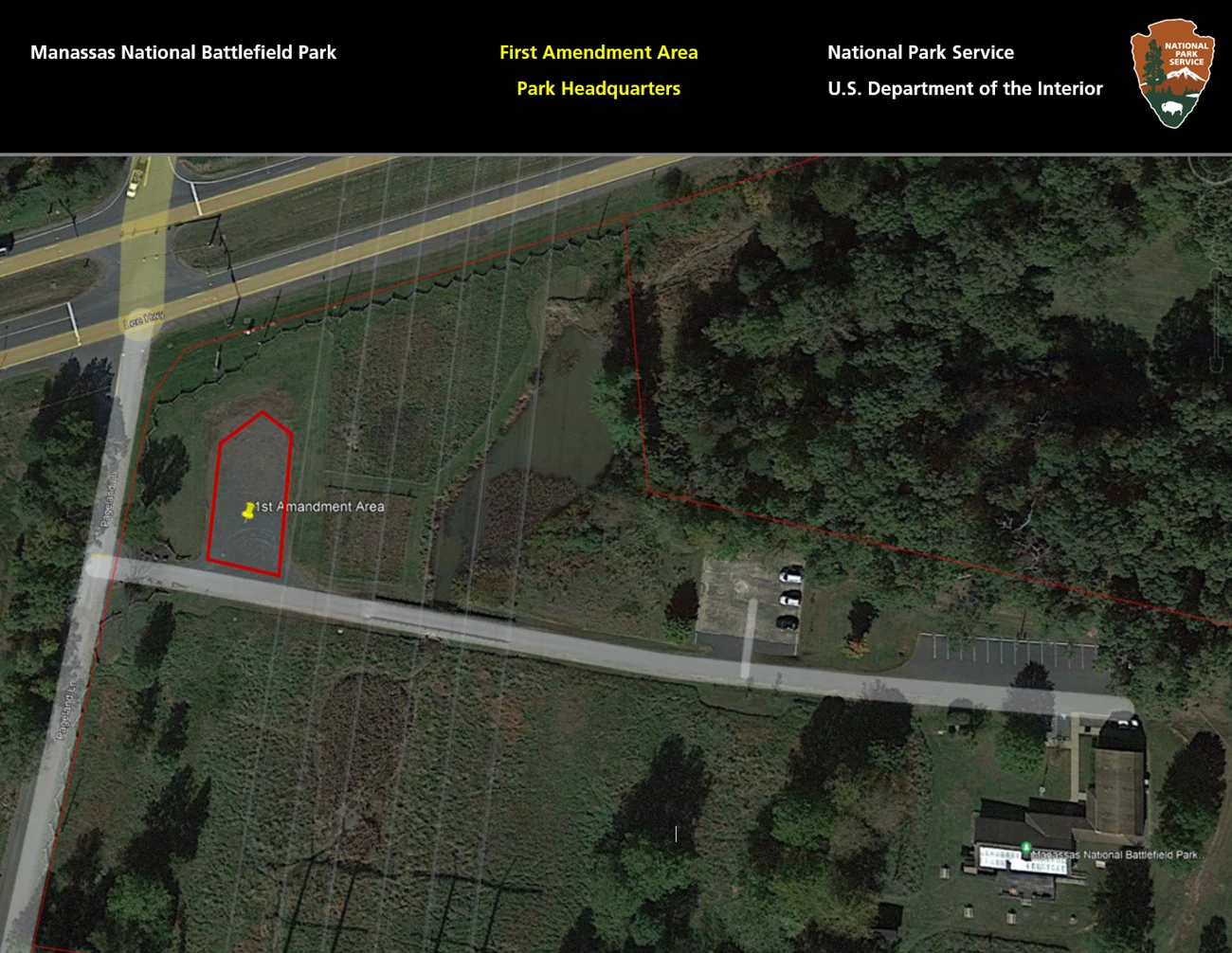Superintendent’s CompendiumOf Designations, Closures, Permit Requirements and Other Restrictions Imposed Under Discretionary Authority 2025Under the National Park Service’s jurisdiction, Manassas National Battlefield Park establishes the regulations to properly manage, protect, and govern the park’s public use. Title 54, United States Code, Subtitle I, Division A, Chapter 1001 authorizes these regulations in Title 36, Code of Federal Regulations, Chapter 1, Parts 1-7. Table of ContentsIntroductionA. What is the Compendium? I 36 CFR § 1.5 - Visiting Hours, Public Use Limits, Closures, and Area Designations for Specific Use or ActivitiesVisiting Hours II 36 CFR § 1.6 - Activities That Require A PermitIII General Regulations36 CFR § 2.1 – Preservation of Natural, Cultural and Archeological Resources IntroductionA. What is the Superintendent’s Compendium?The Manassas National Battlefield Park Superintendent’s Compendium summarizes park specific rules implemented under the Park Superintendent’s discretionary authority. It is public notice that gives the public a chance to comment, identifies areas closed for public use, provides a list of activities requiring either a special use permit or reservation, and elaborates on those public use and resource protection regulations regarding the specific administration of the park. It does not contain those regulations found in Title 36 Code of Federal Regulations (C.F.R.) and other United States Codes (U.S.C.) and C.F.R. Titles, which are enforced without further elaboration at the park level. B. What laws and policies allow the Superintendent to develop this Compendium?54 U.S.C. Subtitle I, Division A, Ch. 1001, § 100101(a) (National Park Service Organic Act of 1916, as amended) grants the NPS broad statutory authority in to “... regulate the use of the National Park System by means and measures that conform to the fundamental purpose of the System units, which purpose is to conserve the scenery, natural and historic objects, and wildlife in the System units and to provide for the enjoyment of the scenery, natural and historic objects, and wildlife in such manner and by such means as will leave them unimpaired for the enjoyment of future generations.” C. Does this Compendium comply with applicable Federal law and requirements?The Superintendent’s Compendium is not considered a significant rule requiring an Office of Management and Budget review under Executive Order 12866. This Compendium complies with Title 54 United States Code and Title 36 Code of Federal Regulations, Chapter 1, Parts 1-7. D. How are the requirements of the Superintendent’s Compendium developed?As outlined above, the NPS has broad authority to determine what uses and activities are appropriate in any particular National Park System area. The Superintendent’s Compendium requirements are developed with an analysis and decision process for that particular NPS area. The decision criteria used during this process are:
E. Where does this Compendium apply?This Compendium’s regulations apply to all persons in federally owned lands and waters boundaries that the NPS administers as part of Manassas National Battlefield Park. F. Who enforces the requirements of this Compendium?Only NPS Law Enforcement Park Rangers or a cross designated Law Enforcement Officer can enforce United States Code, F Titles, and this Superintendent’s Compendium requirements. However, many federal laws and regulations have similar statutes state and local law. Many Compendium requirements complement existing state and local law and regulations that are also in effect in the park and enforced by state and local law enforcement officers. G. Is there a penalty for not adhering to the requirements found in this Compendium?A person who violates any regulations in Title 36 NPS Parts 1-7 or this compendium is subject to a fine as provided by law (18 C.F.R. § 3571) up to $5,000 for individuals and $10,000 for organizations, or by imprisonment not exceeding six months (18 C.F.R. § 3559), or both, and will be adjudged to pay all court costs associated with any court proceedings. I. 36 CFR § 1.5 - VISITING HOURS, PUBLIC USE LIMITS, CLOSURES, AND AREA DESIGNATIONS FOR SPECIFIC USE OR ACTIVITIES(a)(1) The following visiting hours and public use limits are established for all or for the listed portions of the park, and the following closures are established for all or a portion of the park to all public use or to a certain use or activity:
Park Grounds and Facilities Hours of Operation:The dates and hours of operations may be changed upon order of the Superintendent according to park management needs, without requiring revision of this Compendium. Any such changes will be communicated to the public. Determination of Closure/LimitationsThe maintenance areas store and maintain hazardous equipment and materials. There are no public services in these areas or facilities. It is in the interest of public safety to restrict these areas to authorized personnel. Determination of Closure/LimitationsLaw enforcement horses and associated equipment are not for public use or interaction. Presence in their areas is dangerous and requires appropriate training and supervision. Therefore, only authorized personnel may enter these areas. Additionally, a private government residence and associated areas are not open to public use. The following addresses and associated structures and grounds are closed to the public:
Determination of Closure/LimitationsIn consideration of the purpose for which the park was established, routine visitor use is restricted to daylight hours. The Superintendent will review and consider written requests for after-hours uses of the park. Due to a history of illegal activities occurring in the park during evening hours (to include the degradation of natural and/or cultural resources, as well as crimes against persons), it is in the best interest of the park and public to restrict use of the park to daylight hours. Area ClosuresThe following additional areas are closed to the public:
Unmanned AircraftLaunching, landing, or operating unmanned aircraft within the boundaries of federally owned lands and waters administered by the National Park Service as Manassas National Battlefield Park is prohibited without the Superintendent’s prior written approval. Determination of Closure/LimitationsThe inherent qualities of unmanned aircraft use – high-decibel sound levels at high pitch, potentially uncontrolled aerial devices, intrusion upon the visual landscape, and attempts at rescuing errant aircraft from treetops – are incompatible with the values of peace and quiet the park seeks to protect and present a danger to visitor and user safety. This closure is in keeping with National Park Service Policy Memorandum 14-05 regarding unmanned aircraft, issued June 2014. (a)(2) The Superintendent may designate areas for specific use of activity or impose conditions or restrictions on a use or activity. The following restrictions and/or conditions are in effect for the specific uses or activities noted:Recreational and Sporting ActivitiesUnless specifically authorized, the following activities are prohibited:
Determination of Closure/LimitationsCertain recreation uses are prohibited as they detract from the significance and purpose of the National Battlefield Park. These uses also create the potential for visual intrusion of the historic scene and interfere with the visitor's understanding of the First and Second Battles of Manassas. The use of the park for organized athletic events or competitive recreation events is not generally compatible with the significance and purpose of the park. BalloonsReleasing helium-filled balloons is prohibited in all park areas. Determination of Closure/ LimitationsThis measure is required to protect wildlife that may encounter and become entangled with or swallow punctured balloons, and to prevent the deposit of litter on the landscape. GeocachesLeaving property unattended for the purpose of being found or visited by others via a social network, such as Geocaching or Letterboxing, is prohibited without a special use permit. Determination of Closure/LimitationsPlacing geocaches and objects in the park is a prohibited activity based upon potential negative impacts on natural and cultural resources. The negative impacts of concern include digging holes to bury caches, manipulating vegetation and geological formations to conceal caches, disturbing underground cultural resources, archeological resources or both, creating unauthorized social trails, and abandoning property. Vehicle MaintenanceWashing, cleaning, or repairing vehicles (other than short-term emergency repairs) by visitors is prohibited. Determination of Closure/LimitationsThis measure is required to protect the park’s water supply and to prevent gray water and toxic substances being released into natural areas. Cultural Resources, Statues, and Natural FeaturesBearing any weight upon, or placing any person or object upon a statue, monument, cannon, caisson, limber, hay bale, or other natural or cultural feature is prohibited. This prohibition includes tree and rock wall climbing. Determination of Closure/LimitationsMany items in the park provide significant historical contributions while in place/context. These are not meant or placed for recreation and can be easily damaged by even the most innocent activities. The statues and monuments found in the Battlefield were not designed to bear any human weight and could break or deform causing injury or death. Stacked hay bales can dislodge, roll, or deform causing injury or death to a climber. Ham Radio Operations, Kite flying and Frisbee throwing:These activities are restricted to Brownsville Picnic Area. Determination of Closure/LimitationsGiven the existing infrastructure, it's designation as a picnic area and that the area does not have a primary role in the interpretation of the First and Second Battles of Manassas, the picnic area is a reasonable location to allow those activities often associated with picnicking. Using inner tubes, sleds, toboggans, and similar over-snow toys:These activities are restricted to Buck Hill and New York Avenue. Determination of Closure/LimitationsSnow sliding is authorized in the above locations; however, these activities will be monitored to determine the impact on cultural and natural resources, staffing, and interference with the enjoyment and education benefits gained by other park visitors. Buck Hill and New York Avenue are one of the few places on public land in the area that people can enjoy sliding on snow and have historically attracted many people for the purpose of snow sliding. Because opportunities for snow play occur only rarely, this activity does not routinely detract from the legislative intent of the Battlefield. Cross country skiing and snow shoeing are authorized on park trails. Filming, still photography, and audio recording activity may require a permit, consistent with 54 U.S.C. 100905.
|
| Fruit, Nut and Berry | Daily Person Limit |
|---|---|
| Nuts such as: Hickory, Chestnuts, and Walnuts | 1 Bushel |
| Berries such as: Wineberries and Raspberries | 1/2 Gallon |
| Mushrooms such as: Morels | 1 Gallon |
| Fruits such as: Apples, Pears, and Paw Paw | 2 Bushels |
Determination of Closure/Limitations
To protect natural resources, implements may not be used to gather fruits, nuts, or berries. Digging is prohibited, including ground disturbing activities such as staking, except by permit. Areas in the park that contain fruits, nuts, or berries will continue to provide a relatively undisturbed source of seeds for plant reproduction and food for wildlife. There is no evidence to suggest that the limited gathering for personal consumption of the items has had an adverse impact on park resources.
36 CFR § 2.2 - Wildlife Protection
(e) Except pursuant to the terms of a permit, the use of artificial light and infrared lighting/beams for the purposes of viewing wildlife is prohibited.
Determination of Closure/Limitations
Hunting is prohibited in the park. Viewing wildlife by means of artificial light disturbs wildlife in their natural habitat. The park is open daylight hours only.
36 CFR § 2.3 - Fishing
(a) In consultation with appropriate agencies of the Commonwealth of Virginia, the following are prohibited:
- Fishing without possessing a valid Virginia State Fishing License is prohibited. All residents 16 years of age or older are required to have a license. All non-residents, 12 years of age or older are required to possess a license.
- Fishing while in possession of live or dead minnows and live or dead amphibians.
- Fishing is authorized in all park ponds for catch and release only.
Determination of Closure/Limitations
In an effort to maintain a viable Bass population in park ponds, the Superintendent has determined that all ponds will be catch and release only.
36 CFR § 2.10 - Camping and Food Storage
(a) Camping is generally prohibited, except as provided under the following conditions noted:
- Camping is permitted in connection with park sponsored living history programs.
- Any other camping will be permitted only in connection with a Special Use Permit
"Camping" is defined as the use of park land for living accommodation purposes such as sleeping activities, or making preparations to sleep (including the laying down of bedding for the purpose of sleeping), or storing personal belongings, or making any fire, or using any tents or shelter or other structure or vehicle for sleeping or doing any digging or earth breaking or carrying on cooking activities. The above-listed activities constitute camping when it reasonably appears, in light of all the circumstances, that the participants, in conducting these activities, are in fact using the area as a living accommodation regardless of the intent of the participants or the nature of any other activities in which they may also be engaging. 36 CFR 7.96(i)(1) The park was not established for overnight occupancy and does not have the necessary amenities for overnight use. There are numerous commercial camping and lodging facilities in close proximity to the park.
Determination of Closure/Limitations
The park was not established for overnight occupancy and does not have the necessary amenities for overnight use. There are numerous commercial camping and lodging facilities near the park.
36 CFR § 2.11 - Picnicking
Picnicking is restricted to the Brownsville and Stuart’s Hill picnic areas. Placing any objects or items onto the ground outside those areas, especially those that impede the free movement of people or impairs the Battlefield landscape, is prohibited. This prohibition includes blankets, chairs, mats, coolers, or other items that may or may not facilitate the gathering of people or the consumption of food.
Determination of Closure/Limitations
Picnicking, as well as other types of recreational activities are inconsistent with the legislative intent and contemplative nature of most areas of the park. Visitors expect areas set aside for the consumption of food and drinks, and the park has accommodated this expectation at Brownsville Picnic Area and Stuart's Hill. Additionally, the placement of items onto park grounds damages the Battlefield’s physical and visual landscape. Ample facilities for gathering and picnicking can be found at the Brownsville Picnic Area.
36 CFR § 2.13 - Fires
(a)(1) The lighting or maintaining of fires is generally prohibited, except as provided in the following designated areas and/or receptacles, and under the conditions noted:
- Portable grills, smokers, and fire pans may be used at Brownsville Picnic Area, so long as such cooking does not harm park property, (such as picnic tables) or other park resources. The disposal of hot or cold coals and/or ashes in the park is prohibited.
- Campfires are permitted in connection with park sponsored living history programs.
- Any other campfires will be permitted only in connection with a Special Use Permit.
36 CFR § 2.15 - Pets
(a)(3) Pets may be left unattended and tied to an object in the following areas, under the following conditions:
- Pets may be tethered in developed areas for periods not to exceed 5 minutes provided they are tied in such a manner that they are not able to reach a walkway and have a source of water.
(a)(5) Visitors are required to remove pet excrement from parking lots and developed visitor use areas, such as picnic areas, in and around the Visitor Center and historic structures and monuments.
36 CFR § 2.16 - Horses and Pack Animals
(a) The following animals are designated as pack animals for the purpose of carrying equipment: Horses, Mules, Llamas, Burros, Donkeys
(b) Horseback riding is allowed on the designated bridle trails in the park. A map of designated bridle trails is available at the Visitor Center, park headquarters, or from any park ranger. Bridle trails are identifiable by a yellow circle on trail signposts.
(g) Riding off established bridle trails is prohibited
Determination of Closure/Limitations
Horseback riding on established bridle trails is compatible with the primary purposes of the park and affords equestrians compatible recreational opportunities. In certain areas, recreational horseback riding, can detract from the significance and purpose of the park. Equestrian use in sensitive areas such as wet or riparian zones or in culturally sensitive sites can have impacts that are inconsistent with the protection of the cultural and natural resources of the park.
36 CFR § 2.18 - Snowmobiles
There are no designated snowmobile routes. Therefore, snowmobiles are prohibited in all park areas.
Determination of Closure/Limitations
Snowmobile use is inconsistent with the park’s natural, cultural, scenic and aesthetic values, safety considerations, park management objectives, and potentially disturbs wildlife while damaging park resources. The park is not able to manage or mitigate the impacts of snowmobiles on park resources.
36 CFR § 2.21 - Smoking
(a) Smoking or Electronic Nicotine Delivering Systems (ENDS or "Vapes") use is prohibited in the following locations:
- Inside all government facilities and structures, including Park housing
- Within 25 feet of any entrance or exit primarily accessed by the visiting public
- Inside government vehicles
- Within 25 feet of any vehicle or equipment while fueling
- Within 25 feet of any hay bales
- On trails during periods of “Very High” or “Extreme” fire danger, as established by the Virginia Department of Forestry
Determination of Closure/Limitations
Smoking in government facilities and vehicles is prohibited by agency policy DO 50D and Prince William County Code of Ordinances, Sec. 23.1-2. Smoking is also prohibited to protect sensitive cultural and historic structures from the presence of tobacco smoke and the potential for fire.
36 CFR § 2.23 - Recreation Fees
Effective on Friday, January 1, 2016, the National Park Service eliminated the entrance fee for visiting Manassas National Battlefield Park. In addition to the elimination of the entrance fees, Manassas will no longer be offering the America the Beautiful - The National Parks and Federal Recreational Lands passes or other Interagency passes. These passes can be purchased at most federal recreation sites that collect entrance fees, or through the Federal Recreation Pass website at http://www.nps.gov/findapark/passes.htm
36 CFR § 2.35 – Alcoholic Beverages and Controlled Substances
The consumption of alcoholic beverages, including the possession of an open container of alcoholic beverage, is prohibited in all park areas. This includes parking lots and picnic areas but excepts those containers described in 36 CFR § 4.14.
Determination of Closure/Limitations
The prohibition of alcoholic beverage possession and consumption is consistent with State and local laws. They are inappropriate considering the purpose for which the park was established.
36 CFR § 4.10 – Travel on Park Roads and Designated Routes
(a) Operating a motor vehicle is prohibited except on park roads, in parking areas and on routes.
Off-road motor vehicle use is prohibited. All vehicles must remain entirely on paved road surfaces except as indicated by traffic direction. Vehicles are not allowed on paved trails. The Superintendent may issue permits for limited off-road travel in support of National Park Service operations.
Determination of Closure/Limitations
In cooperation with the Virginia Department of Transportation, the Superintendent has established these routes and restrictions as reasonable and safe for the identified locations. These locations have been posted with signs.
36 CFR § 4.13 – Obstructing Traffic
Parking is prohibited outside of designated spaces. Stopping, standing, or parking in front of any gate or building entrance is prohibited. Buses must only park in spaces designated for bus parking. Horse Trailers are prohibited in all parking lots except Brownsville Picnic Area and Vandor Lane. Unless indicated by signs, roadway markings, or officer’s signals, only counterclockwise travel is allowed through parking areas.
Determination of Closure/Limitations
The Brownsville Picnic Area and Vandor Lane parking lots are large enough to accommodate several vehicles and horse trailers while providing access to bridle trails, with minimum impact to the visitor. It is the responsibility of equestrians to remove manure and other organic products (hay, wood shavings, feed, etc.) from the parking lots.
Chinn Ridge Access Road
The entrance from and exit to Sudley Road (Rte. 234) is one-way traffic only. Two-way traffic is only allowed between the parking area at Hazel Plain and the Hooe Family Cemetery.
Henry Hill Visitor Center
All-day, commuter, and parking for purposes unrelated to park operations or visitation is prohibited. Overflow parking may be allowed outside of designated spaces (including unpaved surfaces) at the discretion of the Superintendent as directed by park personnel. Signs, cones, and/or other signals will indicate when this activity is permissible.
Stone House Parking Area
All-day, commuter, and parking for purposes unrelated to park operations or visitation is prohibited. Motorcycle parking spaces may only be utilized by vehicles which fit between the painted lines.
Access Road to 10610 Lee Highway
There are no designated parking spaces anywhere along this road.
36 CFR § 4.21 - Speed Limits
(b) The following speed limits are established for the routes/roads indicated:
- Chinn Ridge Access Road 25 miles per hour
- Brawner Farm Road 15 miles per hour
- New York Avenue 15 miles per hour
- Brownsville Picnic Area 15 miles per hour
Determination of Closure/Limitations
The Superintendent has established these speed limits as reasonable and safe for the identified locations. These locations have been posted with traffic control signs.
36 CFR § 4.30 - Bicycles
Bicycles are only allowed on park roads and in parking areas that are otherwise open for motor vehicle use by the public. Bicycles are prohibited on all trails, including paved trails. E-bikes are allowed wherever traditional bicycles are allowed.
Determination of Closure/Limitations
The closure of the use of bicycles on trails is necessary for the protection of scenic values, protection of the natural resources, implementation of management responsibilities, and to avoid conflict among visitor use activities such as equestrians. Less restrictive measures will not suffice because of the potential threat to irreplaceable cultural resources throughout the battlefield.
36 CFR § 5.6 – Commercial Vehicles
Commercial vehicles and common carriers are prohibited on park roads and bridges within the National Capital Area except when authorized by a permit. 36 CFR § 7.96(f)(1)
Attachment 1: Ashes

NPS

NPS
Attachment 2: First Amendment Areas

NPS

NPS
Last updated: April 1, 2025
